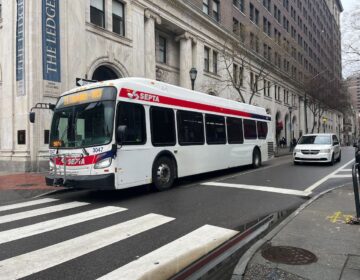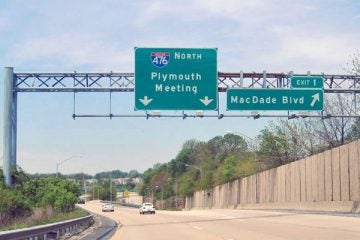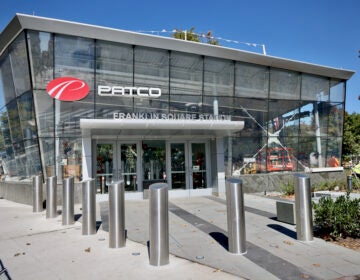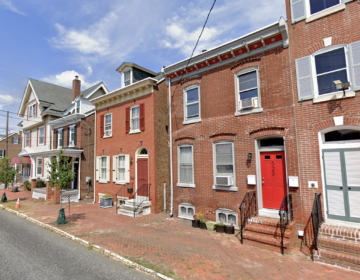Delaware bus routes reimagined after study, first phase of discontinuation and expansions set for November
Businesses like Winterthur Museum have expressed concerns over the planned discontinuation and expansion of routes this fall.
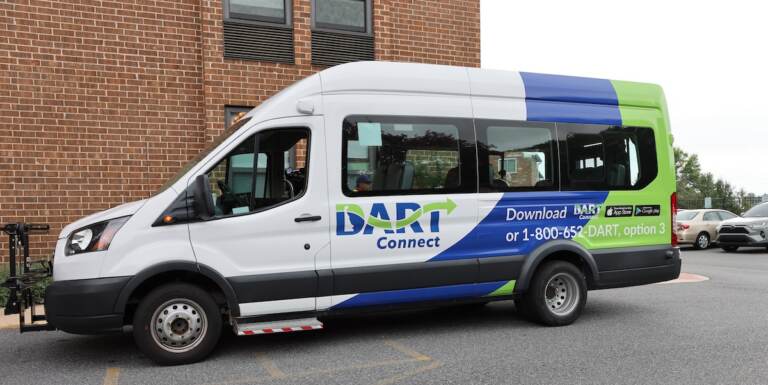
Two mini-transit buses provide ride-hailing-like services to the Newark, Delaware area, seating 11 people. (Courtesy of DART)
From Philly and the Pa. suburbs to South Jersey and Delaware, what would you like WHYY News to cover? Let us know!
Several Delaware bus routes are planned to be discontinued while others look to be expanded as part of a statewide effort to optimize the state’s transit system.
In late 2022, the Delaware Transit Corporation launched DART Reimagine, an in-depth evaluation of the state’s public bus network operated by the Delaware Administration for Regional Transit, better known as DART.
Earlier this year, the study’s final report recommended closing a few routes while expanding and adding others across all three Delaware counties with a goal to create a more sustainable and equitable statewide transit system.
The implementation plan is divided into three phases: the first phase will begin November 17, the second phase is scheduled for 2025 to 2026, and the final phase will take place from 2027 to 2028. However, many of the proposed changes have raised concerns among some bus users and businesses.
The changes are due in part to the ongoing effects COVID-19 has had on in-person work and commuting habits. Albert Loyola, deputy customer experience chief for DART First State, points out that while ridership peaked in 2019, the pandemic reduced those numbers both during and after the crisis, particularly as remote work became the new norm for some.
“The genesis of the study was that transit patterns have changed post-pandemic. Everything was going well in 2019, we had, you know, record ridership and everything was going just great,” he said. “Then the pandemic hit and that changed how people behaved, it also changed how people worked. There’s a lot more people now that have adapted a hybrid work schedule and when they work different days, but also they don’t have to go into an office all the time.”
In the first phase of changes, New Castle County will discontinue Routes 20, 37, 42, 52, and 62. The end of Route 52, which connects the Wilmington Transit Center to Centerville, has sparked concern among local businesses. Currently, the average ridership for this route is just 3.4 passengers per trip.
WHYY News recently traveled along the Route 52 corridor at various times of the day and found that, despite varying schedules, many buses were running with low passenger density.
“This route… has never done very well. The land use up there just [does] not really equate to that type of ridership you have distance between stops,” Loyola said. “It just does not have the density that you have in other parts of the state.”
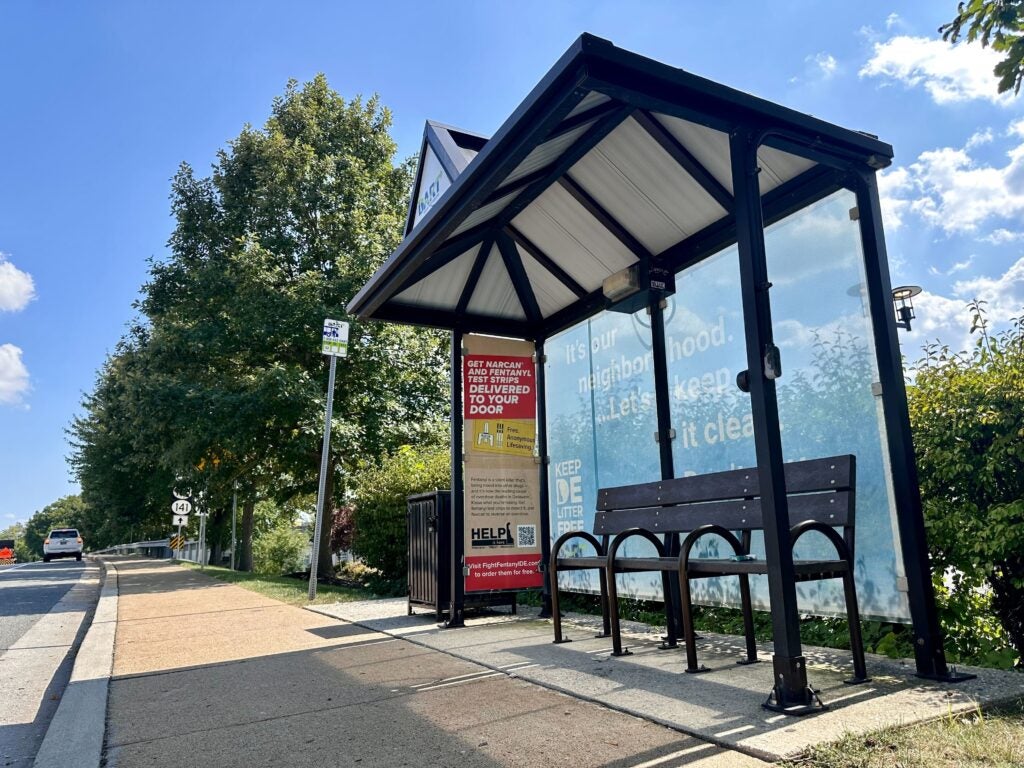
One of the businesses expressing concern over the change is the Winterthur Museum, Garden, and Library. Museum CEO Chris Strand said that Route 52 has been crucial for their employees, members and students, many of whom commute to the historic estate that was once home to Henry Francis du Pont.
Strand recounted a conversation he had with a Winterthur member while riding Route 52 with his staff to observe ridership.
“She had a Winterthur bag and she said ‘I’m a member but I’m not legally allowed to drive anymore. So this is how I go to Winterthur,’” Strand said. “We realized this is how so many of our students and employees and in this case members, get to Winterthur. It’s not a huge number, but for the people who depend upon it, it is kind of a lifeline.”
He mentioned that their program hosts about 60 students, with a few of them relying on the bus for transportation. Additionally, a GED program at AI DuPont High School conducted a survey, revealing that more than half of the students who use the bus would be impacted by the proposed changes.
“There are students that go to AI DuPont High School for their GED and over 60% of those students said that they would take the bus,” Strand said. “These are adult students getting continuing education. And so if the buses aren’t available, they don’t have that as an option anymore.”
Winterthur has been concentrating on growing their audience, particularly through a few new and existing programs introduced about a year ago. However, the potential discontinuation of Route 52 raises concerns that they may lose the gains they have achieved.
“One of the things that we started last year is we started participating in a program called Museums for All, which provides discounted admission. We also started a Library Pass Program. We have a Blue Start Program for veterans,” he said. “Those things have been one of the ways we have broadened our audience more. My fear is that we will not be able to grow this audience that we’ve been really trying to reach out to.”
Winterthur has been exploring alternatives to support their employees and staff, such as ride-hailing programs. Other options they’re also considering include a cultural arts initiative that could benefit all museums in the area.
“I’ve talked with some other institutions in the area and said, well maybe we have a cultural art loop type of an idea. That’s a lot more coordinated and that’s quite a bit of expense for the museums,” he said. “I will credit DART for looking at some of these alternative programs and I think the commuter solutions idea is useful. We haven’t arrived at the perfect solution yet for our students and for our employees, so we’re still exploring options.”
Strand attended one of DART’s public forums to express his concerns about losing the Route 52 bus. He hopes that DART will consider solutions or alternatives to support the few individuals who rely on this route for transportation.
DART says plans are still in development, and there is potential to address the needs of the Greenville area by extending the Route 20 bus to serve the region.
“We’re looking at some other options because we do have segments of the Route 52 that are operated by the Route 10 and the 20,” Loyola said. “We are looking into the possibility of moving the 20 closer to that Greenville area.”
Their plan aims to improve access to public transit by expanding coverage from 33% to 50% of all Delawareans, with a special focus on supporting vulnerable populations.
Although the study suggests discontinuing several routes, these changes are not yet final, as DART continues to welcome public feedback.

Get daily updates from WHYY News!
WHYY is your source for fact-based, in-depth journalism and information. As a nonprofit organization, we rely on financial support from readers like you. Please give today.



